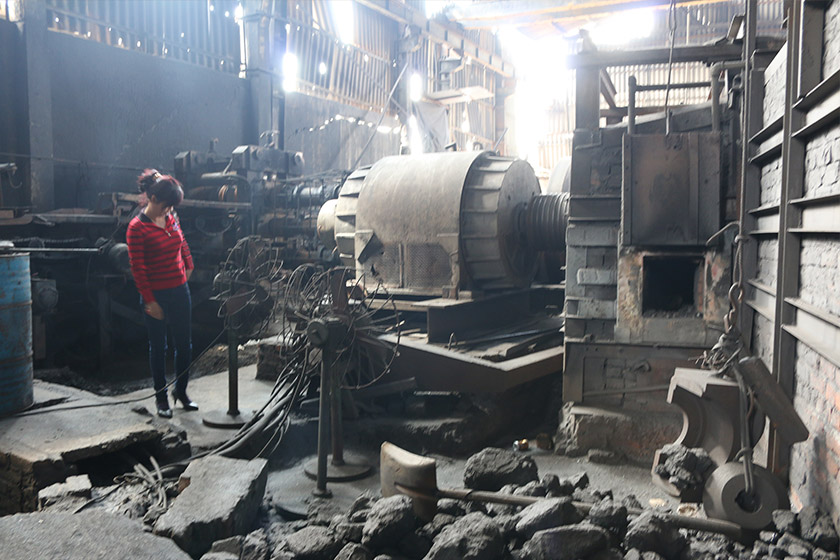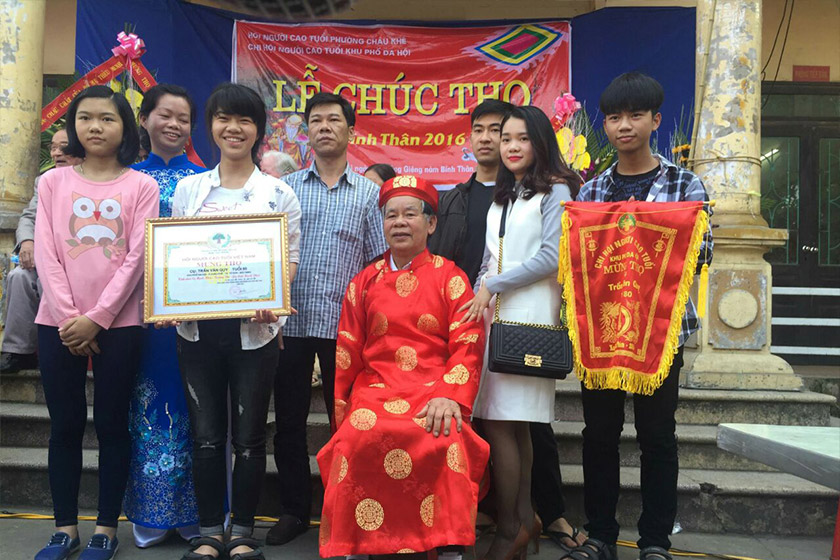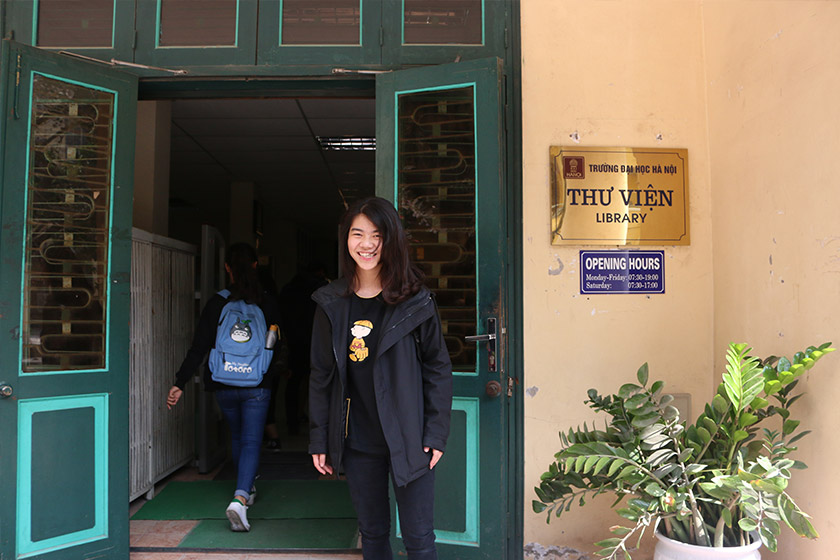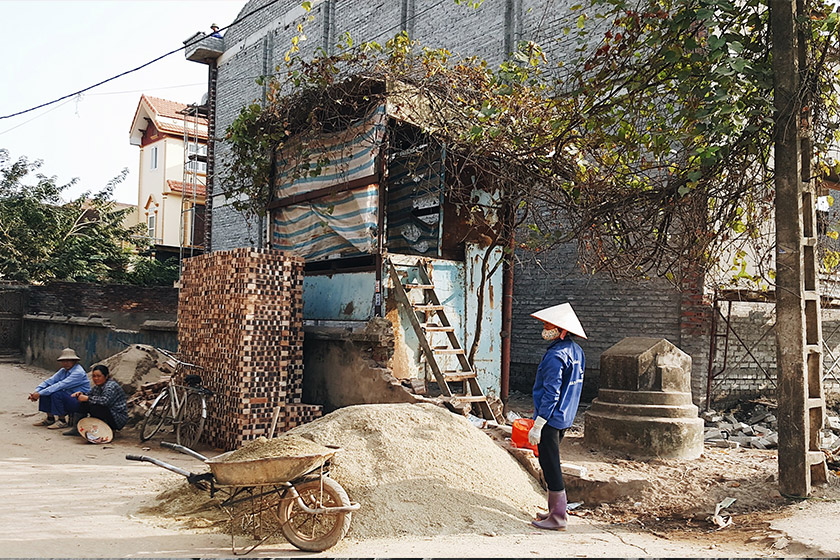“We suffered more with the French: they killed men and raped women. The Americans were different. We never saw them. They just dropped bombs.”
"But the French burnt down our family home. Thirty-two people were killed by the cannons they fired into the village. Kids don't really know anger but they know fear and I was very afraid."
Now, eighty-two years old, Tran Van Quy speaks haltingly as he reminisces about the past. Born into a well-to-do, land-owning family, he remembers his pre-war childhood as an idyllic time: running through his family's large home, looking after the water buffaloes and eating rice every day.
"However, when the revolution came our lands were seized. I was very angry at that time. I wrote letters to officials but they never responded – so I became determined to buy back our properties. The first was in 1968, a piece of land close to where our workshop is now.”
Poorly-implemented land reform in the mid-1950s was to bring terrible suffering to much of Vietnam's fertile Red River valley: depressing harvests, wiping out granaries as farmers cut back on planting rice.
Tran shakes his head and his voice almost cracks: "There were no jobs and we were very poor. But at least our village, Da Hoi, had a tradition of metalworking even though the production was slow and laborious. “That's why I decided to study metallic engineering."
Located some 20 kilometres from Hanoi, Da Hoi has long been famous for its iron workshops – interspersed between rice-fields and vegetable farms.

However, over the years and especially after the arrival of the mammoth Samsung manufacturing plant in nearby Bắc Ninh, the entire community has boomed. Indeed, the expansion had been so rapid that the village now seems ragged, perpetually cloaked in dust and dirt. Da Hoi's transformation has come at a steep cost.
Tran barely acknowledges the pollution as he talks about his business: "We used to ship the final product to Hanoi. We made window bars, steel for construction and bicycle parts. We also made metal grilles for shop-houses. Now, because there is so much construction, we're all very busy."
Though frail he remains a determined man: as tough as the steel bars he's been producing for the past four decades. Tran is extremely proud of his family's journey back to prosperity, saying: "I have fourteen children. They're all rich and CEO's. The 'merits' have been returned to us." Pausing, he adds: "Yes, the good has come back."

His daughter Mrs Loi, lacks the raw confidence of the father. With a slightly anxious expression (and now 45 years old), she came of age amidst the deprivations of the 1980's - as Vietnam struggled with the inefficiencies of a command economy. Mere survival was already a triumph. Having completed her secondary school education – still a rarity in those days – she quickly returned to the family business. "I've never had big dreams. I'm used to a tough life. All I've ever wanted to do is to put food on the table.”
Electrification in the 1991s was a game-changer. Still, competition with Taiwan and China remain fierce for small Vietnamese businesses like the Tran family’s. Taiwanese and Chinese products are good but their prices are high - and this is where the Southeast Asian challenger seeks to undercut them.
In contrast, Loi's daughter, Yeen - who is eighteen years old and studies Spanish at Hanoi University - is as ebullient and determined as her mother is cautious.

Speaking at a trendy coffee-shop just outside the campus, Yeen is brimming with barely-contained energy. She also has a smile so broad and infectious it's almost heart-stopping: "I'm the first in my family to go to university. I'm very privileged and I've received a lot of support from my parents. My mother would like me to go home every weekend but I have other dreams. I want to complete my degree and travel. I have an opportunity to spend nine months in Valladoid or Santiago de Chile. "But I love going to the workshop and watching my mother managing everything – talking to her clients and the staff. And then there's way the metal is cast and recast into shapes. But best of all is when they pour water onto the hot iron and it pops!"
When asked about what she felt about all the suffering that her mother and grandfather had endured: "We really feel the melancholy of those generations. Compared to us, they had it much tougher." "But I think now is a good time to be in Vietnam – much better than before. I can pursue my dreams and improve myself."
















